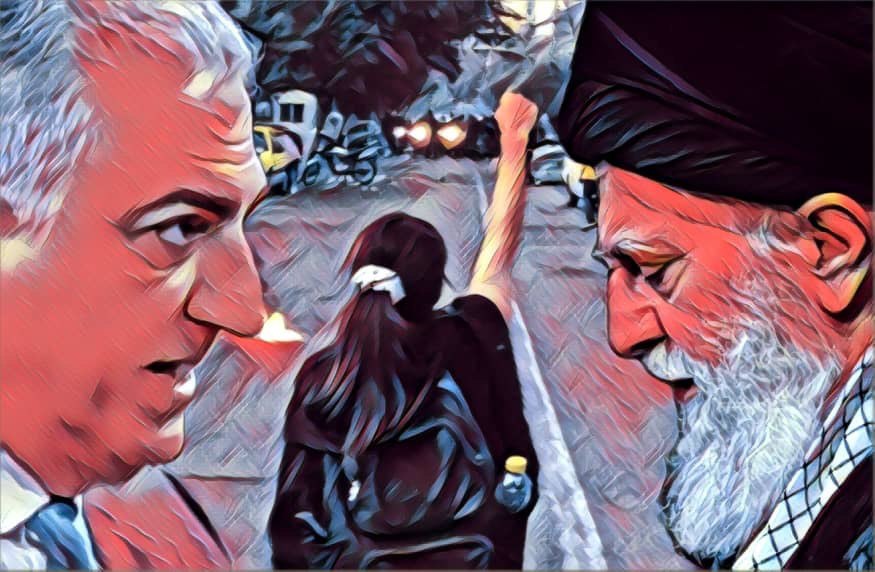Why the Mahsa Movement Didn’t Lead to Overthrow
Why the Mahsa Movement Didn’t Lead to Overthrow: According to Iran Gate, many political analysts believe the Mahsa movement provided a golden opportunity for overthrow advocates to engage in impactful and result-oriented activities. However, after a year, it can be said that these activities did not bring success to the overthrow advocates and even left many protesters disillusioned with overthrow movements.
A year has passed since the start of the Mahsa movement in Iran, but contrary to the claims of overthrow movements, not only has the Islamic Republic not been toppled, but we are witnessing intensified repression in various areas by the government. This report delves into the reasons for the lack of success of overthrow advocates in this significant and historical movement, which experts believe was the most serious movement since the 1979 revolution in Iran and was claimed to aim for overthrow.
But what was the reason for the overthrow advocates’ lack of success during this period, and why does the Islamic Republic still hold power in Iran? Iran Gate has examined the relationship between the Mahsa movement and overthrow advocates and why overthrow movements have not succeeded over the past year. This report is the first part of this investigation, focusing on understanding the relationship between protesters and overthrow advocates and the ups and downs of this relationship since Mahsa’s death.
What Was the Relationship Between the Mahsa Movement and Overthrow?
The tragic death of Mahsa Amini in the custody of Iran’s morality police sparked a massive and widespread movement unprecedented in Iran. This movement managed to unite all ethnic groups and political and social currents, and from the statements of senior officials of the Islamic Republic, it can be understood how much this movement worried the layers of power.
However, the question of whether the movement’s goal was overthrow or reform is misleading and deceptive because no statistical survey has been conducted to draw a precise conclusion. However, the relationship between this movement and the overthrow movements of the Islamic Republic can be examined.
According to many experts, before the Mahsa movement, overthrow advocates had never been able to ride the waves of public discontent in Iran and engage in effective political activities. However, the Mahsa movement provided an opportunity for overthrow and even separatist movements to emerge and manifest widely. Therefore, it can be said that the Mahsa movement had a direct and meaningful relationship with the groups and figures advocating the overthrow of the Islamic Republic.
The Prince Was the Star of the Field
As mentioned, overthrow advocates in 2022 were more active and effective than ever before, but it should be noted that the presence of a political brand, namely Prince Reza Pahlavi, among the overthrow figures and some slogans by the people inside established this relationship for the first time since the 1979 revolution.
The roots of this relationship trace back to December 2017 and the protests organized by conservatives opposing the Rouhani government. These protests quickly spiraled out of the control of security institutions under hardliner control and turned into waves of protests and gatherings across the country. In one of these gatherings in Mashhad, an important slogan was chanted that ignited hope in a significant section of overthrow advocates: ‘Reza Shah, rest in peace,’ which once again sparked discussions about the return of the monarchy to Iran.
However, some believe this connection does not merely signify a desire for monarchy among Iranian protesters but rather a search for efficient governance and a cohesive bureaucracy, prompting such slogans. Yet, some analysts interpret this connection as a desire among protesters for Reza Pahlavi’s return to the country and the establishment of a monarchy by the second king of the Pahlavi dynasty.
All these factors paved the way for Reza Pahlavi to become a star in the early months of the Mahsa movement protests. During the protests in Iran, he embarked on numerous trips worldwide, meeting with leaders of major global powers and conversing with prominent political figures. It might be said that the image of Reza Pahlavi before September 16, 2022, was vastly different from what emerged afterward. He became an important political figure, delivering speeches at major American and European universities, issuing numerous calls for gatherings of Iranians abroad, and receiving significant support from Iranians residing in the USA, Canada, and Western Europe.
In Tehran, Water Doesn’t Flow Uphill
But in Tehran, the situation was different. Slogans from protesters about monarchy were influenced by Reza Pahlavi’s activities abroad, but such slogans never gained widespread traction among the majority of protesters. Therefore, it can be said that contrary to what was claimed, Iranian citizens did not have much inclination to establish a monarchy in Iran, and if slogans were chanted in praise of the first king of the Pahlavi dynasty, it did not mean the protesters desired monarchy.
Even at the height of Reza Pahlavi’s activities at the Georgetown meeting and the formation of an unusual coalition with celebrities and some human rights activists, there was no sign of support from Iranian protesters inside the country for these actions by Reza Pahlavi. Moreover, no call for gatherings and protests inside the country was issued by him that received a positive response from residents of Iran.
In the second part of the file on why the Mahsa movement didn’t lead to overthrow, the reasons for the disillusionment of Iranian protesters inside and outside the country with the overthrow movements of the Islamic Republic are addressed.
English
View this article in English

